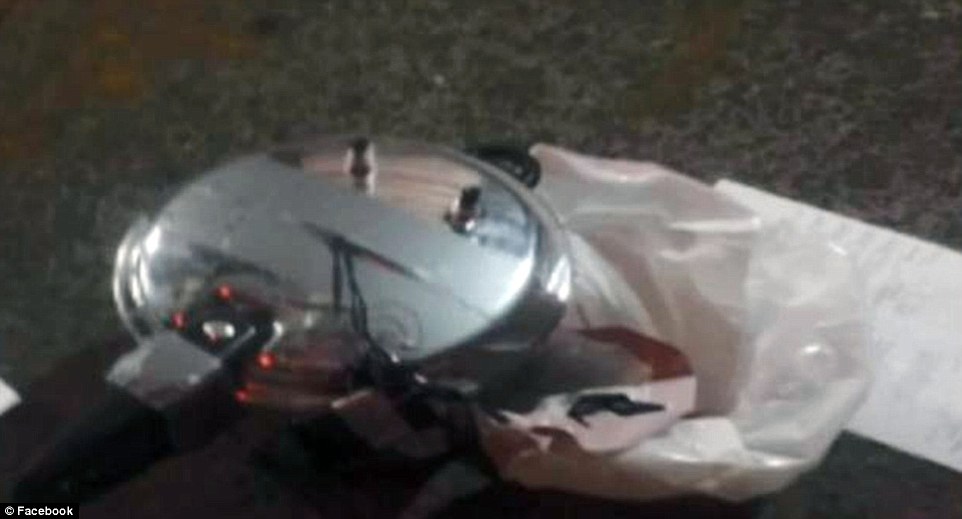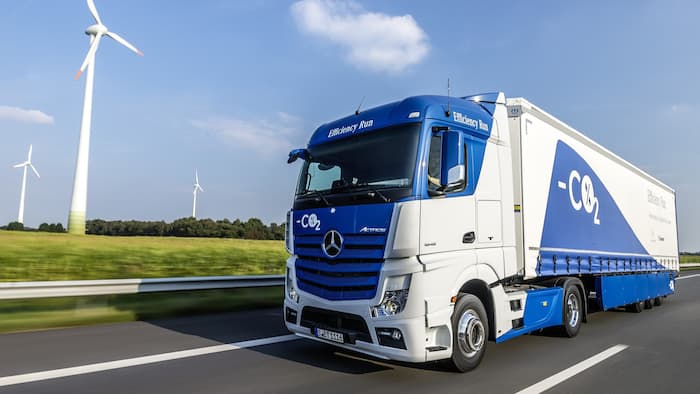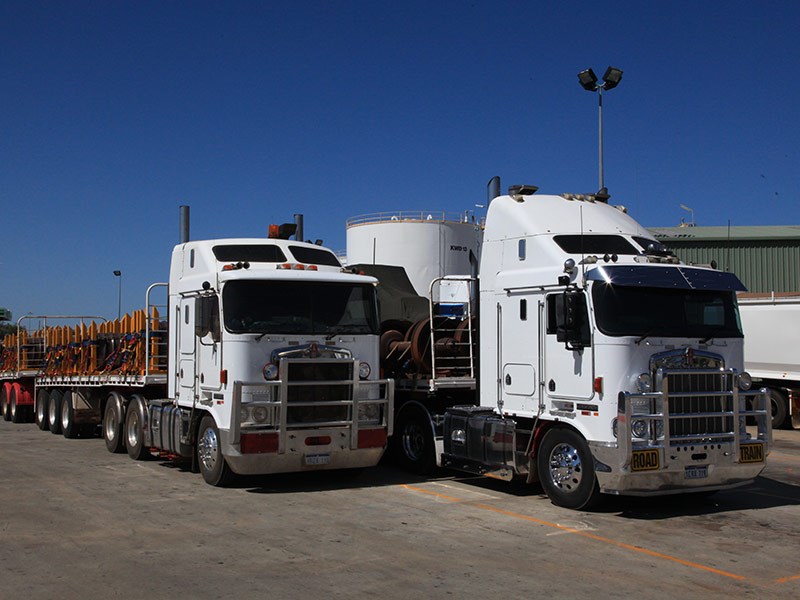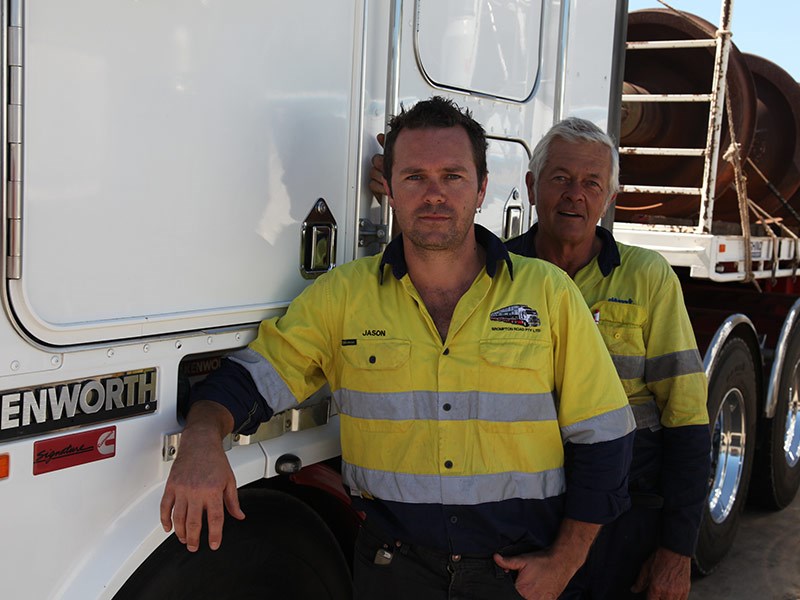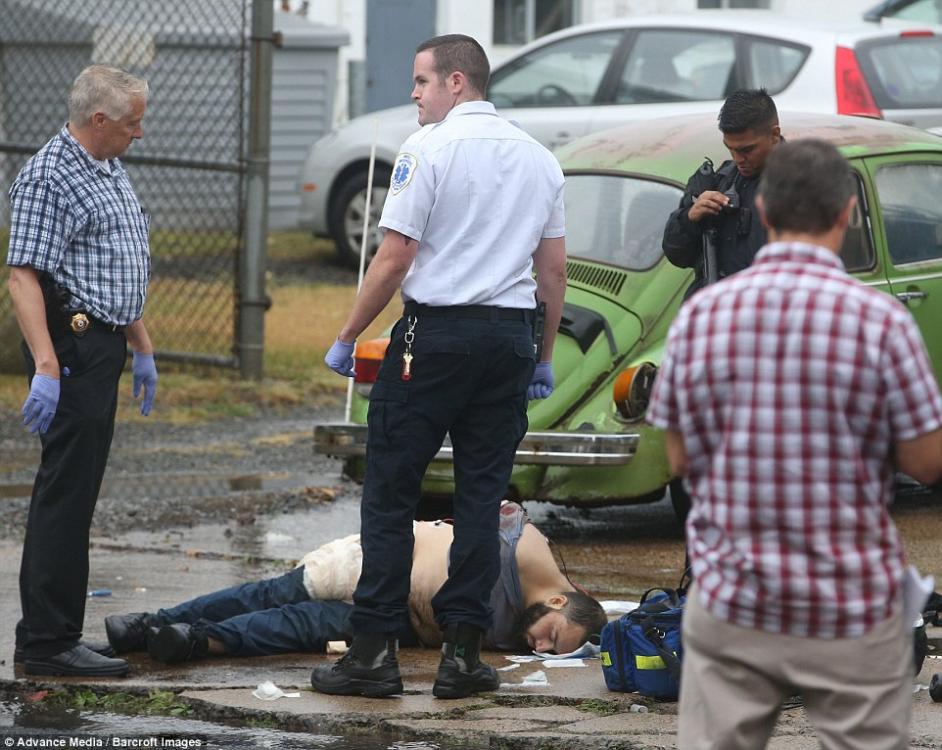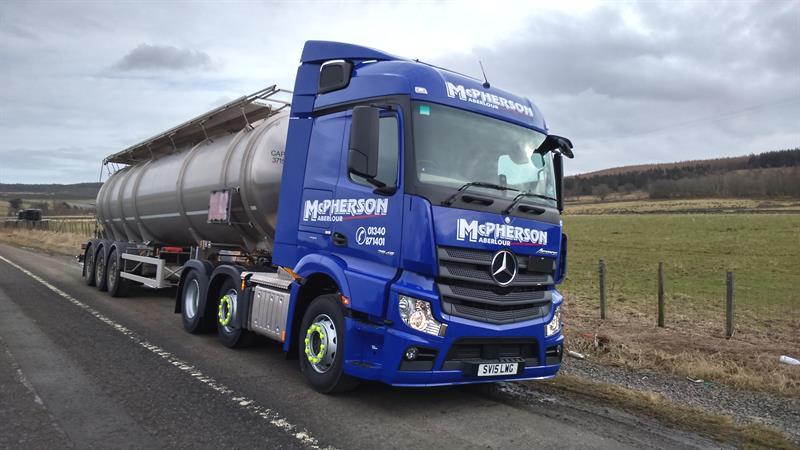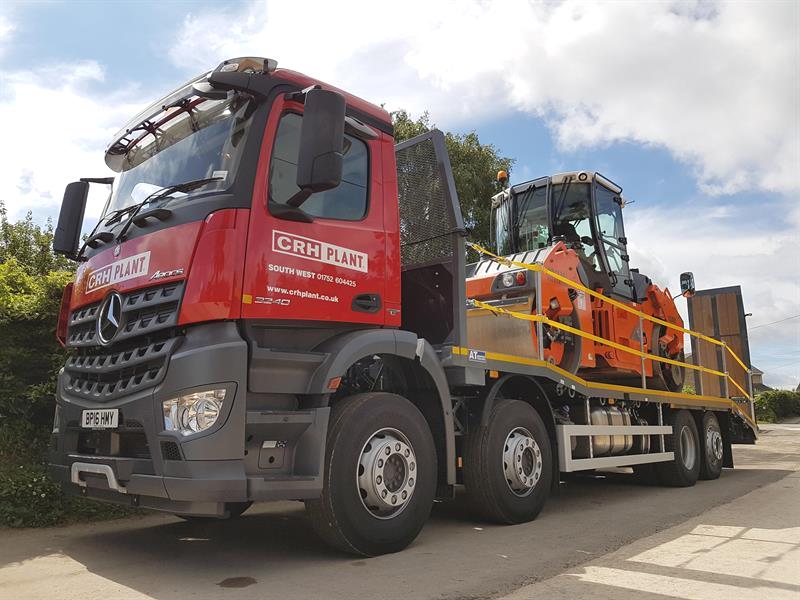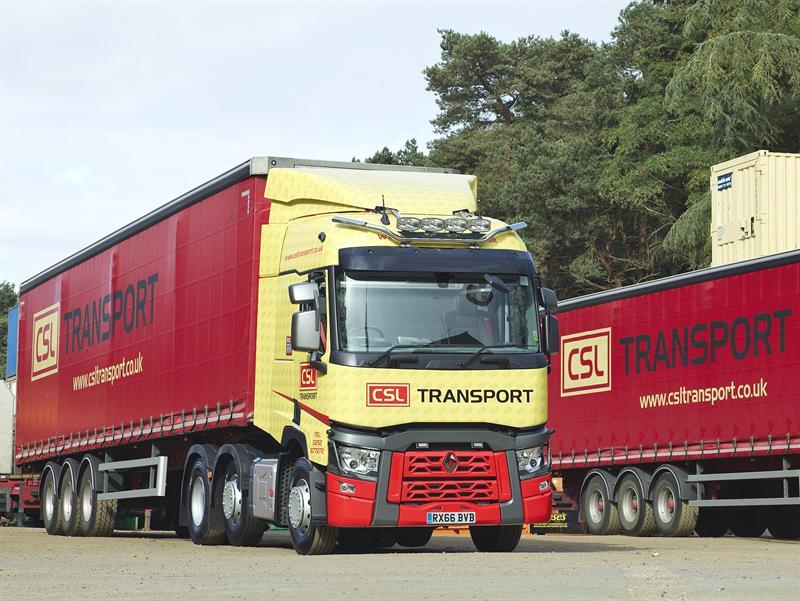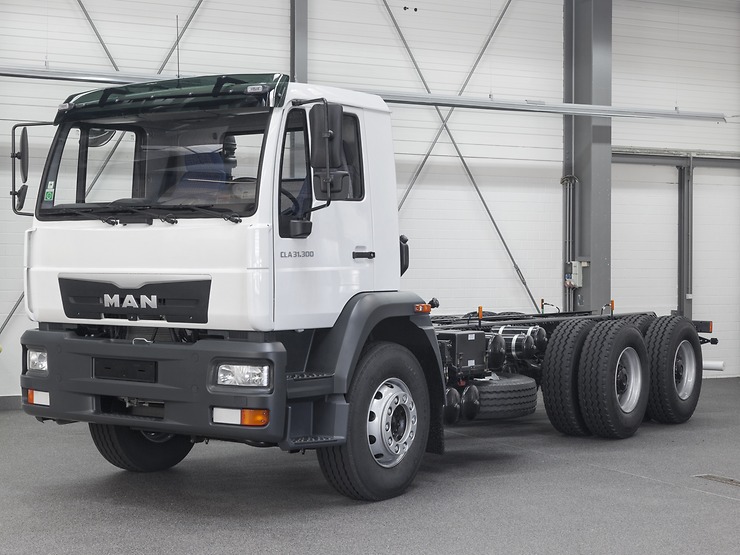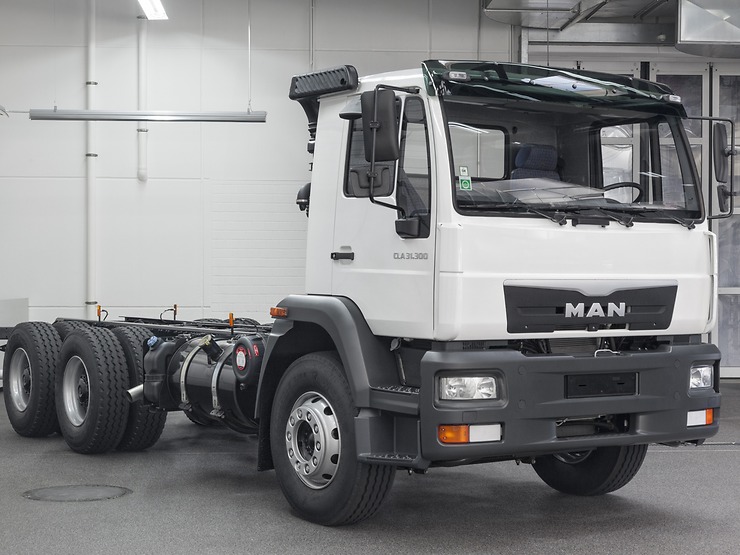
kscarbel2
Moderator-
Posts
17,893 -
Joined
-
Days Won
86
Content Type
Profiles
Forums
Gallery
Events
Blogs
BMT Wiki
Collections
Store
Everything posted by kscarbel2
-
Hyundai Commercial Vehicle / May 19, 2015 .
-
The Guardian / September 19, 2016 Five explosive devices have been found in a backpack near Elizabeth train station in New Jersey. Two men called police after discovering the backpack with wires and a pipe coming out of it in a garbage can around 8:30 p.m. Sunday at North Broad Street and Julian Place. One of the devices exploded at 12:30 a.m. Monday when a bomb squad robot tried to disarm it by cutting a wire. .
-
The Financial Times / September 18, 2016 Groups to unveil aerodynamic components that promise to improve fuel efficiency and reduce emissions Mercedes-Benz Trucks has teamed up with trailer-maker Krone (http://gruppe.krone.de/english/) to sell a package of aerodynamic components that promise to improve fuel efficiency and cut carbon emissions. The two companies will demonstrate the new products on Thursday at the 66th IAA Commercial Vehicles conference in Hanover, where they hope to show the trucks industry has not been asleep at the wheel when it comes to the environment. The EU seeks to reduce emissions in the long-haul sector by 30 per cent by 2030, but Daimler — Mercedes’ parent — has been critical of Brussels for focusing narrowly on tyres and engine improvements, rather than the whole picture of how vehicles are actually used. Wolfgang Bernhard, head of Daimler’s trucks division, said regulators were trying to trim grass that had been lawn-mowed, but there was still grass standing sky high in places where nobody was looking. “It’s more cumbersome to look at trailer aerodynamics than it is to look at tyre classifications. We need to start looking there — there is a lot to be gained,” he said. Last year Daimler performed efficiency runs to determine what sort of fuel savings could be gained on heavy-duty lorries equipped with optimised trailers, tractors and tyres, as well as “predictive powertrain control”, a cruise control unit that uses GPS and 3D maps to look ahead and maintain an efficient speed on inclines and declines, saving fuel. The result was 12 to 14 per cent fuel savings. The lesson was that a few tweaks to the aerodynamism of a lorry would give a completely different air flow for the vehicle. The problem was, Daimler makes tractors — the front part of a heavy duty vehicle housing the engine — not trailers. So Mr Bernhard commissioned Krone, a family-run group and the second largest-trailer maker in Europe, to see if they could churn out a product at an economical cost. Krone was able to develop a package comprising side panels, a four-part rear wing and “A-label” low-resistance tyres that delivers a 7-9 per cent improvement in fuel efficiency. The “Profi Liner Efficiency” package it will unveil this week will cost €2,000 and be available right away. Previously something similar would cost €5,000. The lower price is meant to entice haulage companies when they are buying a new vehicle: the average lorry drives 120,000km per year; if a company can save 7-9 per cent in diesel, at €1.10 per litre, the savings will be €2,000 to €2,500 a year, said Gero Schulze Isfort, managing director of sales and marketing at Krone. The savings could have an outsized affect. Transportation in general accounts for one-quarter of man-made CO2 emissions, and while heavy-duty vehicles account for just 4 per cent of vehicles in the EU they are responsible for 30 per cent of on-road emissions, according to the International Council on Clean Transportation. A retrofit kit for existing vehicles will cost about twice the price, depending on volume, plus assembly cost. Mr Bernhard estimates that would pay for itself after about two years, on average. “Seven to nine per cent improvement is a huge step,” said Mr Bernhard. For context, he points out in the past 20 years Daimler lorries improved their fuel efficiency by 22 per cent. Lab-tested fuel efficiency figures have looked suspect since the Volkswagen emissions scandal was revealed one year ago, so Daimler and Krone first offered the efficiency package to five companies for three months of testing. The companies — Elflein, Grosse-Vehne, Rhenus, Seifert and Wiedmann & Winz — then used the trucks for everyday operation to compare their fuel efficiency with its normal fleet. “If you want to give a message to customers, you use real-life customers under their weather conditions, their roads, their vehicles,” Mr Isfort said. Separately, Daimler will be showcasing in Hanover its latest generation Mercedes-Benz Actros model with an OM 471 engine, which saves up to six per cent on fuel. Combined with the Krone products and its cruise-control unit, Daimler says the vehicle is 20 per cent more fuel efficient than a standard semi-trailer-tractor combo from 2014. .
-
Owner/Driver / September 16, 2016 Family-owned operation Brompton Road in Western Australia has come up with an innovative solution to hauling train wheels involving two Kenworth K104s Brompton Road is a small family-owned and operated company based in Bullsbrook, 25km north of Perth on the Great Northern Highway. Charlie Berne and his wife Julie started Brompton in the early 1970s. Today the couple’s two sons Jason and Tim are an integral part of the business. Owner//Driver recently caught up with Charlie and Jason at the BP Kewdale truck stop. The boys had just grabbed some breakfast and were about to head off to unload. "Except for a brief time offshore I have been with dad since the day I left school in ’95," Jason says. "That’s over 20 years now." Like many operators Brompton Road saw the advantages of specialising. The company has been working for rail companies for the past 30 years. "I should call myself ‘TNT’, trains not trucks," Charlie laughs. "We are not general carrier, we just specialise in looking after our customers’ needs." For Bromptons that has meant the need to solve a few tricky problems while working out transport solutions for their clients. The additional services means it’s more than just a transport company. One of Brompton Road’s big jobs is hauling rail wagons from Adelaide to Port Hedland. Charlie explains that the pilot vehicle costs on that job alone were $280,000. Charlie and Julie organised four trucks to carry out the work, with help of a subbies, two of which were towing Brompton trailers. Jason explains that they would unload the cars, take the bogies out of the bins and put them on the track. "We hook up the hoses and either Charlie or Julie do a brake test," he says. "So we commissioned the cars and that is why secured getting the job and with the combination that Jason’s got, we go up with three wagons and were only using 150 litres more fuel than the trucks carrying two. "Life is full of challenges and we love challenges." Brompton’s most recent challenge was moving railway wheels. The wheels come out of Newcastle to Brompton’s yard before being trucked north. It is a new concept because, previously the wheels were in skip bins unrestrained. The new ‘pallets’ allow the old wheels to stand up," Charlie says. "Everything is held and restrained; we have a patent pending on this system. "We think it is pretty good and it’s so simple and yet works so well. "The wheels go into the robots lying down and they come out of the robot standing up and that’s how we designed it." Despite their hands-on work, Charlie and Jason both agree that Julie is the backbone of the company. "She does everything," Jason says. "Mum cooks for us, does the paperwork, the finances and drives a truck, and she keeps us all honest. "For some families it doesn’t work, but for us I think it is the feature of our business. We all work together for a common good." .
- 1 reply
-
- 1
-

-
ABC News / September 18, 2016 GOP vice presidential candidate Mike Pence said his role model for the number two spot is the last Republican to hold the job -- Dick Cheney. “I frankly hold Dick Cheney in really high regard in his role as vice president and as an American,” Pence said on ABC’s "This Week." --------------------------------------------------------------------------------------------------------------------------------------------------------- With those remarks about Cheney, Pence has lost all credibility.
-
Associated Press / September 18, 2016 Late one night in February 2011, a group of U.S. soldiers and civilians on a dusty airfield in Jalalabad, Afghanistan conspired to steal and sell jet fuel to a mysterious Afghan contractor. Little did they know that night that the scheme would evolve into a months-long racket that likely ended up funding the Taliban’s ongoing insurgency. Army Sergeant Kevin Bilal Abdullah, Spc. Stephanie Charboneau and civilian contractors Jonathan Hightower and Christopher Weaver helped an Afghan contractor smuggle over $1,225,000-worth of JP-8 jet fuel off Forward Operating Base Fenty from February to May 2010. JP-8 is a standard jet fuel utilized by U.S. Air Force aircraft, meaning the fuel ring’s actions likely jeopardized the Air Force’s ability to fly missions in support of U.S. troops, putting their lives in danger. “Fuel theft not only robs U.S. taxpayers and damages the reconstruction effort, but military operations can be jeopardized when needed fuel is stolen or otherwise diverted,” said the Special Inspector General for Afghanistan Reconstruction (SIGAR) in a report released Wednesday. “Impending operations may force a commander to accept what fuel he can and forgo accountability processes to ensure mission success.” To make matters worse, the illicit sale of fuel on the Afghan black market is considered to be a primary funding stream for the Taliban and other Afghan insurgent groups, according to SIGAR. The conspiracy was a fairly simple operation, but clandestine in nature. Abdullah oversaw the distribution of fuel in the Nangarhar province, which gave him and his fellow conspirators access to the fuel and the papers required to transport it. Working in conjunction with the Afghan contractor, the the group would fill 3,000 gallon trucks, known locally as “jingle trucks” due to their flare and adornments. Abdullah would then forge the transportation movement requests (TMRs) required to move fuel from the base to various locations in the region and provide them to the Afghan contractor, allowing the drivers of the trucks to leave the base with the fuel with no problem. While Charboneau, Abdullah, Hightower and Weaver would eventually be caught and charged for their crimes, another group of soldiers on FOB Fenty continued the operation just months later. Army Sgt. Regionald Dixon, Sgt. 1st Class Marvin Ware and later Spc. Larry Emmons engaged in a similar fuel smuggling operation involving forged TMR documents and an Afghan contractor from December 2011 to February 2012. A mysterious Afghan contractor paid the group $6,000 for each 3,000 gallon truck full of fuel. While investigators have reported the two schemes were separate, it is unclear whether or not both groups were bribed by the same contractor. The second group was eventually caught and prosecuted. A third fuel smuggling case was recently discovered in 2016. Former Army Spc. Sheldon Morgan pleaded guilty to aiding an Afghan contractor in stealing and smuggling fuel out of FOB Fenty. It is unclear whether Morgan was involved or aware of the other two groups, though the dates of the crimes do coincide. At the time of Ware’s indictment, SIGAR chief John Sopko noted his office had recovered $1.6 million in illegal proceeds and $20 million in civil penalties related to fuel smuggling cases. Fuel is considered “liquid gold” in Afghanistan’s notorious black market. The Defense Logistics Agency has supplied more than 2.5 billion gallons of fuel, worth more than $12 billion, to U.S. personnel and the Afghan military as of September 2014. “Almost all the large fuel theft schemes investigated by SIGAR included U.S. military personnel and, in some cases, contract civilian personnel,” noted SIGAR’s report. Corruption in Conflict: Lessons from the U.S. experience in Afghanistan......... https://www.sigar.mil/pdf/LessonsLearned/SIGAR-16-58-LL.pdf Army Soldier Sentenced for Facilitating Thefts of Fuel in Afghanistan......... https://www.justice.gov/opa/pr/army-soldier-sentenced-facilitating-thefts-fuel-afghanistan Army Sergeant Indicted For Accepting Bribes From Afghan Trucking Company In Exchange For Stealing Jet Fuel In Afghanistan........... https://www.justice.gov/usao-hi/pr/army-sergeant-indicted-accepting-bribes-afghan-trucking-company-exchange-stealing-jet Army Sergeant Pleads Guilty to Conspiracy in Afghanistan Bribery Scheme.......... https://www.justice.gov/opa/pr/army-sergeant-pleads-guilty-conspiracy-afghanistan-bribery-scheme-0
-
Now, regarding Volvo's U.S. market Mack brand warranties, you CAN obtain them...........from the State of Ohio. Of course, any ordinarily prudent person would wonder why one can readily obtain a copy of the Mack brand warranties from a U.S. state, but not from the Mack brand itself. http://www.dot.state.oh.us/Divisions/ContractAdmin/Contracts/PurchDocs/023-16/RRTruc01/042016 MACK Standard Truck Warranty Certificate.pdf http://www.dot.state.oh.us/Divisions/ContractAdmin/Contracts/PurchDocs/023-16/RRTruc01/042016 and newer Standard Engine Mack.pdf
-
Unlike the former Allentown, Pennsylvania-based Mack Trucks, Volvo Group's U.S. Mack brand unit does not publish its warranties (or model spec sheets). Why ? http://www.macktrucks.com/search/?t=warranty&r=us On the other hand, Mack Trucks Australia, does list its warranties for all to see. Now, how hard was that? https://www.macktrucks.com.au/parts-and-services/warranties/
-
Need Some Advice '88 Mack Midliner
kscarbel2 replied to CobraR05's topic in Modern Mack Truck General Discussion
Here's the specific info again...........https://www.motul.com/ca/en-US/products/oils-lubricants/dot-3-4-brake-fluid?f[application]=144&f[range]=25 -
The New York Times / September 18, 2016 A radical Islamist bomb that injured 29 people on Saturday in the Chelsea neighborhood of Manhattan, and another that failed to detonate, were filled with shrapnel and made with pressure cookers, flip phones and Christmas lights that set off a powerful explosive compound. Both bombs were designed to create maximum chaos and fatalities — they also provided a trove of clues even as any suspects remained unnervingly at large. The bomb that exploded, at 23rd Street, was filled with small bearings or metal BBs. A second device on 27th Street that did not explode appeared to be filled with the same material. Radical Islamist Afghan immigrant Ahmad Khan Rahami, age 28, has been arrested in Elizabeth, New Jersey for the bombing and charged with five counts of attempted murder and two gun charges. Bail was set at $5.2 million [Bail ???]. A video places him with a duffel bag at both the 23rd and 27th Street bomb locations. Fingerprints off a cellphone utilized on the improvised bombs identified Rahami. The FBI says Rahami made a trip back to Afghanistan in April 2013, and several to Pakistan over the last decade. He has a firearm license. Officials are increasingly focused on the possibility that the attack was connected to a bombing that took place 11 hours earlier in New Jersey. There, three pipe bombs were tied together, placed in a trash can and also employed by a flip cellphone as a timing mechanism. Only one of the three pipe bombs detonated and no one was injured. The explosive in that device appeared to be black powder. Governor Andrew M. Cuomo said “there is no evidence of an international terrorism connection with this incident.” It was unclear why Governor Cuomo and Mayor Bill de Blasio dismissed with such certainty a tie to international terror. Experts said the New York bomb’s construction offered conflicting clues. The explosive material was similar to a commercially available compound called Tannerite. It is made by combining ammonium nitrate and aluminum powder, is frequently used in exploding targets at firearms ranges and has rarely been used in improvised explosive devices in the United States. But the materials are easy to buy here because each one on its own is not an explosive. At the same time, other evidence from the bomb seemed to point overseas. Pressure cookers have been a container of choice for many improvised explosive devices over the years. They were used in the deadly Boston Marathon bombings in 2013 based on a model in publications put out by Al Qaeda’s affiliate in Yemen. An expert on IEDs used by terrorists around the world said that a device constructed with a cellular phone as a timer and Christmas lights as an initiator would indicate a higher-than-average competence than is usually found in the United States. “Most of what we in the United States is a pipe bomb with black powder or smokeless powder or a simple hobby fuse,” said the expert. “This would be the high-end of sophistication for IEDs in the United States.” Late on Sunday, FBI agents were seen tearing apart a car of an Uber driver, who said the law enforcement officials were searching for possible evidence related to the attack. The bomb in Manhattan was placed under a steel dumpster, and was powerful enough to catapult it across the street. The 29 people who were wounded mostly suffered cuts and abrasions and had all been released from the hospital by Sunday morning. Police Commissioner James O’Neill said the unexploded device was found by two state troopers as they walked down 27th Street after calls to 911 alerted the police to a suspicious device. It was being examined by bomb technicians at a police facility in Rodman’s Neck in the Bronx. .
-
The New York Times / September 18, 2016 A radical Islamist Somali immigrant, identified as Dahir A. Adan, age 22, stabbed nine people on Saturday night at Crossroads Center mall in St. Cloud, Minnesota. The FBI is investigating as a “potential act of terrorism.” Adan, who arrived in the U.S. fifteen years ago, was asking people if they were Muslim and stabbing those who said they were not. Nine people were injured in the 8:00pm attack before an off-duty police officer fatally shot the knife-wielding man. The nine victims included seven men and two women who ranged in age from 15 to 53. The attacker, who was dressed in a security guard uniform, mentioned Allah and asked at least one victim if he was Muslim. All nine victims were expected to survive. Chief William Blair Anderson of the St. Cloud police told reporters at the scene, “It has hit home for us,” adding, “But I want everybody in St. Cloud to know that we will be diligent and we will get to the bottom of this.” “It’s an awful day, honestly,” Chief Anderson said. In a phone interview on Sunday morning, Mayor Dave Kleis said the mall, Crossroads Center, was an active crime scene and would remain closed. He praised the off-duty police officer, who he said had “clearly saved lives and protected the other individuals.” “This is exactly what keeps me up at night, and last night it did,” Mr. Kleis said. “This could happen in any community in this country, and certainly we have seen it happen. Certainly it is something that really scares a community.” Mayor Kleis [improperly] identified the off-duty officer as Jason Falconer, a police officer in nearby Avon, Minnesota. Kleis said video footage of the shooting showed Officer Falconer confronting the attacker in a Macy’s store and shooting him as he charged with a knife. “For me watching it, it looked like a training video for what law enforcement should do,” Kleis said. The mayor said the wounded included seven men, one woman and a teenage girl, all from the St. Cloud area. The stabbing event in Minnesota occurred on the same day that 29 people in New York City were injured in an explosion and that an explosive device detonated near the route of a race in New Jersey. The FBI is becoming convinced that the New York and New Jersey episodes were connected, but have given no indication of a link to the stabbing in St. Cloud. Chief Anderson said officers had searched two local residences on Sunday in connection with the case. He said the police had had at least three prior interactions with the attacker, mostly for minor traffic violations. St. Cloud, a city of about 67,000 residents, is about an hour’s drive northwest of Minneapolis. .
-
Transport Engineer / September 15, 2016 Whisky haulage business McPherson says it is looking to roll out its installation of Fontaine’s new LED fifth wheels across its 200-strong truck fleet, after trialling 10 of the units for three months. “We’re no different from any other company in that drivers do make mistakes and we do have the risk of trailers running away,” says Ian Jamieson, fleet engineering director for the Aberlour-based operator. “Keeping on top of this is an important health and safety issue.” To reduce mishaps during trailer changes, the company installed 10 new Fontaine LED Sensor Fifth Wheels “We began fitting the system 3 months ago and, so far, there have been no accidents,” confirms Jamieson. Fontaine’s new fifth wheel uses three sensors on the jaws, handle and safety clip to ensure no part of the coupling procedure has been neglected, before showing a green LED light on the fifth wheel itself to inform the driver – and security staff in any gatehouse the vehicle passes – that the is safe to operate. An in-cab display not only confirms the exterior ‘green light’, but will give an audible and visual warning should the coupling be incomplete, acting as an additional failsafe. Jamieson says another impressive feature is the built-in facility to take an additional feed from the circuit board mounted on the fifth wheel itself, enabling McPherson to link the sensors and LED indicator light with its existing on-board CCTV systems. “As well as working with the cameras themselves, which we have pointed at the indicator lights on the fifth wheel, we have also been able to set the sensors to additionally trigger a red light on the monitor in the cab,” he explains. “This means not only does the driver know when he’s made an error, he knows we’re recording what he’s doing about it, too.” Jamieson concludes: “The Fontaine LED sensor fifth wheel is definitely well worth having. It’s saving us a lot of time and effort, simply because there are no mistakes. It couldn’t be any safer.” Fontaine LED Sensor Fifth Wheel: http://fifthwheel-europe.com/led_sensor.html http://fifthwheel-europe.com/pdf/LED_Sensor/Fontaine_UK.pdf .
-
Transport Engineer / September 15, 2016 Specialist plant and equipment supplier CRH Plant has added two new Andover Trailers plant bodies, both mounted on 32-tonne Mercedes-Benz Arocs 3240L 8x2 rear-steer chassis, to its existing 25-plus Andover-built commercial vehicle fleet. “The team are always extremely accommodating,” comments CRH Plant managing director Neville Thomas. “We tell them what we need; they tell us how it can be done. “In all the years we have been working together they have never let us down. This is what our relationship is built on, so why would we go to anyone else?” As with each of CRH’s previous Andover Trailers plant bodies, the new units are bespoke designs, to the company’s specifications, and include Andover’s removable working at height barriers, which have become a requirement on many of the sites CRH visits. The new bodies also feature Andover’s fold forward ramps – which Thomas insists are fitted to all CRH trailers and rigid trucks due to the fuel savings he’s witnessed. The ramps have also been designed with a shallow loading angle to accommodate CRH’s most popular 13-tonne self-propelled rollers. Each was also specified with a drawbar coupling, six pairs of lashing points, and a remote-controlled Ramsey H800 hydraulic winch – the latter installed low to the floor, along with chain trays, thanks to an Andover-engineered recessed section behind the headboard, providing clearance for the truck exhaust which runs above the chassis over the second axle. These two 32-tonne rigid trucks mark a step up in size for CRH, having previously operated 26-tonne rigids from a range of chassis manufacturers. “We opted for 32-tonne plant bodies out of necessity, mainly due to the fact that new emission regulations mean the self-propelled rollers we supply are getting heavier,” explains Thomas. “Though we are phasing out some of our older trucks, the Andover bodies are holding up so well that most are still part of the fleet,” he continues, adding that CRH Plant has also now ordered a pair of the latest generation of tri-axle semi-sloping step frame trailers from Andover, for moving road surfacing equipment. They will be built to a similar specification to the plant bodies, he says, again with fold-forward ramps, Andover’s working at height system and Chapter Eight marking on the rear. Delivery is expected early 2017. CRH Plant’s latest plant bodies will be working five days per week and are expected to last over 0 years, covering some 700,000km. They will operate out of CRH’s Plymouth and Sheffield depots, delivering a wide range of heavy plant and specialist equipment across the South West and North East. .
-
Transport Engineer / September 15, 2016 CSL Transport has taken delivery of seven 44-tonne Range T520 6x2 tractors following what it describes as impressive fuel consumption figures and good driver feedback. The Surrey-based firms’ new trucks comprise five mid-lifts and two tags, one specified with a 9-tonne front axle. They join CSL’s 23-strong fleet, which has operated Renault Magnums and Range T460s for several years. “The outstanding service we have received from Renault Trucks South and BRS over the years has been a crucial factor in our vehicle selection on this occasion,” explains CSL Transport fleet manager Dan Broda. “Optimum fuel economy was also an important factor and we are getting around 9.1mpg, with one vehicle reaching 10mpg. This compares to 7.4-7.8mpg with previous trucks, so we are delighted with these improved figures,” he continues. Driver retention is another key focus for CSL, he says: “With a national driver shortage, we need to be able to attract and retain some of the best in the industry. “We know that our drivers like the Renault trucks, especially with all the added features, and adding more Range Ts with the right spec is one sure-fire way to keep our best employees motivated and on board.” In fact, CSL’s new Range T520 tractors were specified with luxury leather seats, double bunks, light-bars and spotlights. They will now be transporting containers, cabins, timber and plant across the UK and Europe, as well as moving barriers for high-profile London events. All the new trucks were supplied by dealer Renault Trucks South on a four-year, with full repair and maintenance through BRS. .
-
Scania Group Press Release / September 16, 2016 Ups and downs put their marks on a company’s future, some leaving lasting impressions that become embedded in the corporate culture. Scania is mustering all of its expertise to make sure the latest truck range carries the brand hallmarks proudly into the 2020s. The company spent its first decades searching for a viable strategy, but since the 1920s, the focus has been on heavy vehicles and strong customer relations. Operations have remained profitable ever since 1934. After the war, Scania-Vabis stood prepared for international expansion. Newly recruited engineers would form the engineering backbone for the remainder of the century, with a reformulated strategy, state-of-the-art products and refurbished facilities – and a new company spirit that soon became embedded in the walls. Advocating teamwork and ‘consensus’ decisions, the management introduced advanced analysis methods at the laboratory, started preparing for a modular product range and took advantage of international contacts in their innovation work. The twist “build what customers need, not what they want” implied that engineers were expected to understand customers’ operating conditions. Another move to tighten customer bonds was to make the service organisation part of the feedback loop to R&D. During three decades, systems and components were harmonised in preparation for the fully-modularised GPRT-series in 1980. Modularisation is Scania’s way of broadening the customers’ choice; interfaces between components and systems are designed to maximise flexibility. This global product range paved the way for volume growth and expansion worldwide. By the late 1980s, the new management under Leif Östling (1989) outlined a new strategy for global expansion, and took radical action to come to terms with production. The entire production system was reformed, involving leadership principles and an empowered workforce. This yielded a new company spirit with a set of strong core values – Customer first, Respect for the individual and Quality. “Eliminating waste” became a catch phrase. Waste means unnecessary work, storage, material or time, as well as all forms of environmental pollution. In this way, continuously improving work processes became part of daily work. This new company spirit was fundamental in pulling Scania through the financial crisis in 2008-2009. It now encompasses the entire company, including the dealer network. Ever since the early 1900s, the company’s engineers managed to stay abreast of international developments in engine technology. Inspired by contacts with Magirus in Germany, Scania-Vabis’ first diesel engine (1936) was both lighter and smoother than competitors. And the direct-injection diesel technology (1949) developed in cooperation with Leyland in the UK, produced performance that was superior to the competition from the outset. Convinced of a future need for more power, Scania developed an engine the market didn’t know it needed – the Scania V8 in 1969 – which gave birth to Scania’s low-rev philosophy, principles now adopted by the entire industry. From the 1990s, Scania’s cooperation with Cummins in the USA provided deep insights in combustion technology and engine management that proved instrumental for Scania’s pioneering efforts in emission control and alternative fuels in the 2000s. Scania now has the broadest platform of Euro 6 engines with the greatest flexibility in alternative fuels, and is known for its excellent fuel efficiency. The Scania Technical Centre has industry-leading know-how in vehicle engineering, powertrain technology and electronics. Scania is committed to improving transport efficiency by providing energy savings, alternative fuel solutions, and phasing in platooning, electrification and autonomous driving, for instance. All electronics are developed in-house, and this sector is the most vivid in terms of innovations and patents, providing a flow of products, features and services that put Scania at the forefront in terms of connected vehicles, fleet management and associated services. Scania-Vabis always put pride in the design of its products. Post-war styling cues included a common radiator grille on trucks. Swedish designer Björn Karlström created the timeless 75-series (1958-1980), the Briton Lionel Sherrow styled the forward-control LB80/110-series (1968), Italian stylist Giorgio Giugiaro gave the GPRT-range (1980) contemporary flair, and the elegant 4-series was penned by Bertone. Scania’s own studio is now responsible for all styling touches, e.g. the R-series (2004 and 2009), the New Streamline (2013) and the new truck generation (2016). Well aware of customers’ pride in their vehicles, great care is taken to nurture traditions and incorporate appealing Scania traits. A profitable company can afford to maintain focus and patiently invest in its future. Backed by vitalising lessons learnt over a century and a quarter, Scania is launching its new truck generation, designed to take Scania and its customers into a future of more sustainable transport in the 2020s and 2030s. Photo gallery - https://www.scania.com/group/en/a-living-heritage/
-
Greater unit sales and increased market shares | Contemporary MAN CLA in continuous further development MAN Truck & Bus Press Release / September 16, 2016 Ten years ago, MAN Truck & Bus laid the foundations for modern, sustainable freight and passenger transport in India with the MAN model CLA. The company’s commitment has been borne out by significantly higher unit sales, increased market shares and a marked increase in revenue compared with the previous six months. Furthermore, substantial investments in the development of the CLA series will continue to increase its market presence in the future. An economic giant has awoken in India in recent years, with an increase in the country’s gross national product of seven percent being recorded in the past year alone. In the context of increasing internationalisation, great opportunities have presented themselves for MAN Truck & Bus to participate in the economic recovery. Against this background, the Munich-based commercial vehicle manufacturer chose to realign parts of its strategy for India. Both the reactivation of the dealer network and the operational improvement of structures and processes as well as the implementation of numerous customer events are just some examples of the company’s new approach. It has been ten years since MAN entered into a cooperation for a joint venture in India, thus laying the groundwork for further expansion into non-European markets. Shortly afterwards, the first MAN CLA came off the production line at the newly established production facility in Pithampur, India. About half of the vehicles are intended for the domestic market, while the other half are divided between 40 different export markets across Africa, Asia and the Middle East. The product range of the modern CLA series comprises semitrailer tractors with various axle variations and chassis with or without bodywork. In the first five years of the joint venture, the development and localisation of the extensive MAN CLA portfolio took centre stage, together with the establishment of a nationwide sales network. As a logical consequence of this increasing commitment MAN Truck & Bus assumed the remaining shares in the cooperation in 2012 and founded the current MAN Trucks INDIA pvt. Ltd. The MAN CLA series currently covers tonnages from 15 to 37 tonnes gross vehicle weight. Its modest yet reliable engines and robust chassis, designed to make light work of poor road conditions, mean the CLA series is ideally suited to the markets in Asia, Africa and the Middle East. Just like the engines with high sulphur tolerance and 6S-850 and 9S-1110 ZF gearboxes, the cabs and sleeper cabs likewise originate from the proven LE2000 series. For local and distribution transport, the proven MAN AP axles are preferred, while hypoid axles are available for some of the models in the long-haul version. The CLA series is powered by a 6-cylinder in-line engine with 6.9 litre cubic capacity. The EURO 4 unit boasts 300 HP at 2,300 rpm and features a torque of 1,150 Nm at 1,200–1,800 rpm. As previously, the MAN CLA product range has been successively further developed to ensure that freight and passenger transport continues to be both sustainable and environmentally friendly in the target markets in the future. In the meantime, both the 8x4 chassis and the MAN CLA bus chassis have proven to be successful in day-to-day customer use. However, business relationships with India have a far longer history. As early as 1936, a Nuremberg sales consultant travelled to India with six E-type truck chassis and D 0534 engines in order to market them there. The visit was a resounding success. After a few weeks, he returned to Germany with an order for 30 additional chassis. Just one year later, the German-Indian dealership was launched in Bombay. In 1958, the first production and assembly agreement was drawn up between MAN and India to cover the assembly of type 415 L1 AR chassis in Jabalpur, with the still legendary product name SHAKTIMAN. More than 70,000 vehicles in this product range were created during this period, of which some are still in use today. .
- 1 reply
-
- 1
-

-
Renault Trucks Press Release / September 16, 2016 Giving you a better business. .
-
Renault Trucks Press Release / September 15, 2016 The partnership between Renault Trucks and the World Food Programme explained by Marina Catena, WFP Director in France and Monaco; Jean-François Milhaud, co-founder of the partnership, currently UNHRD Ghana Hub Manager (United Nations Humanitarian Response Depot) and Bruno Blin, Renault Trucks President. .
-
BigMackTrucks.com
BigMackTrucks.com is a support forum for antique, classic and modern Mack Trucks! The forum is owned and maintained by Watt's Truck Center, Inc. an independent, full service Mack dealer. The forums are not affiliated with Mack Trucks, Inc.
Our Vendors and Advertisers
Thank you for your support!


